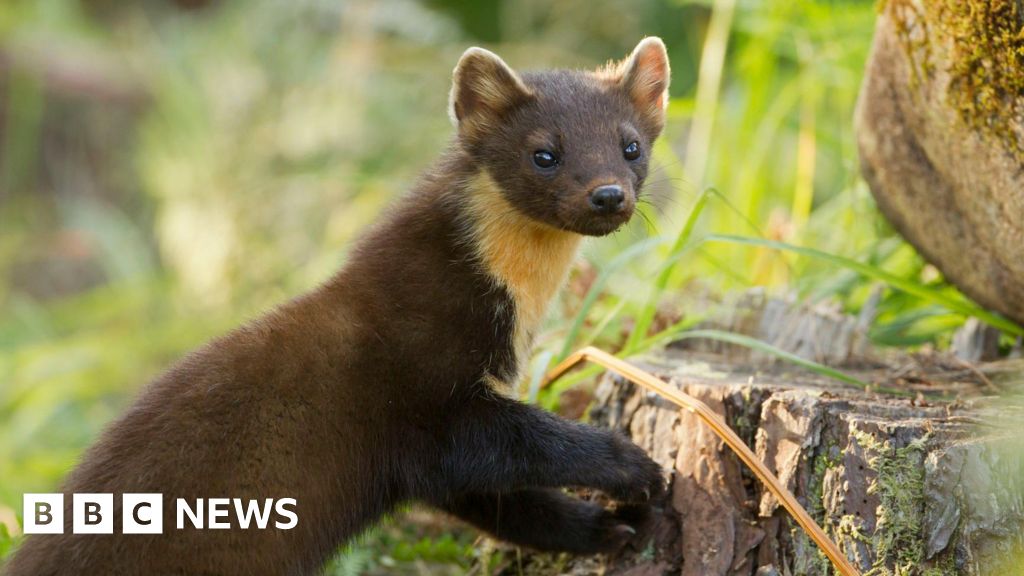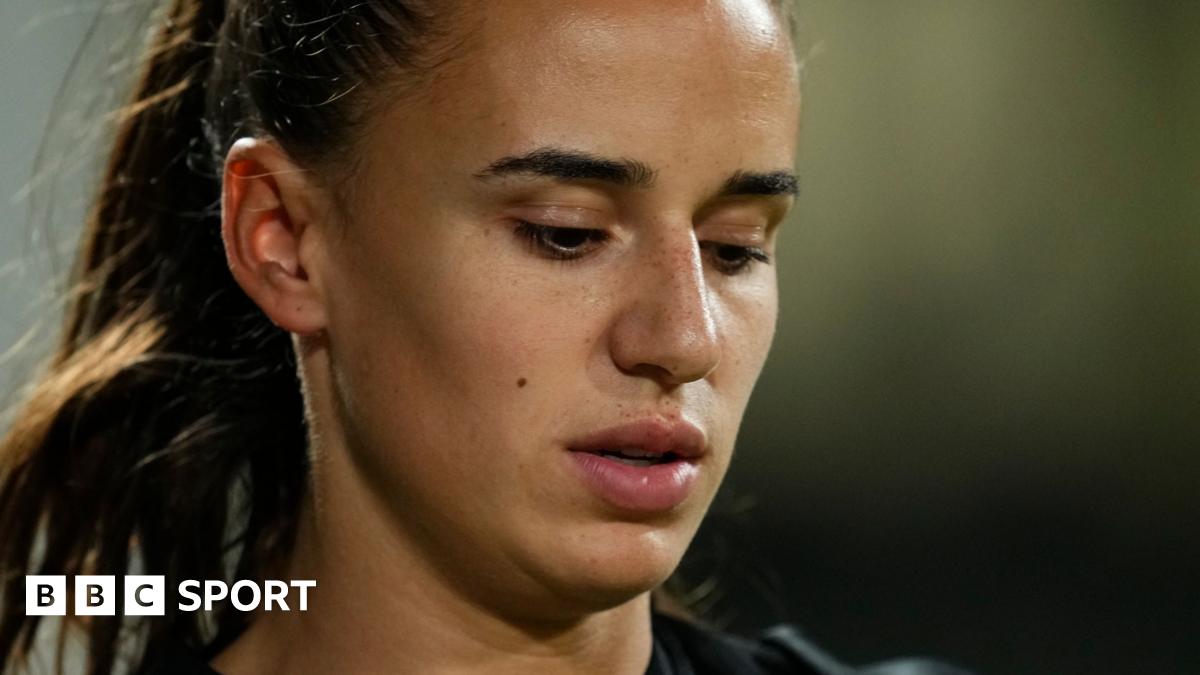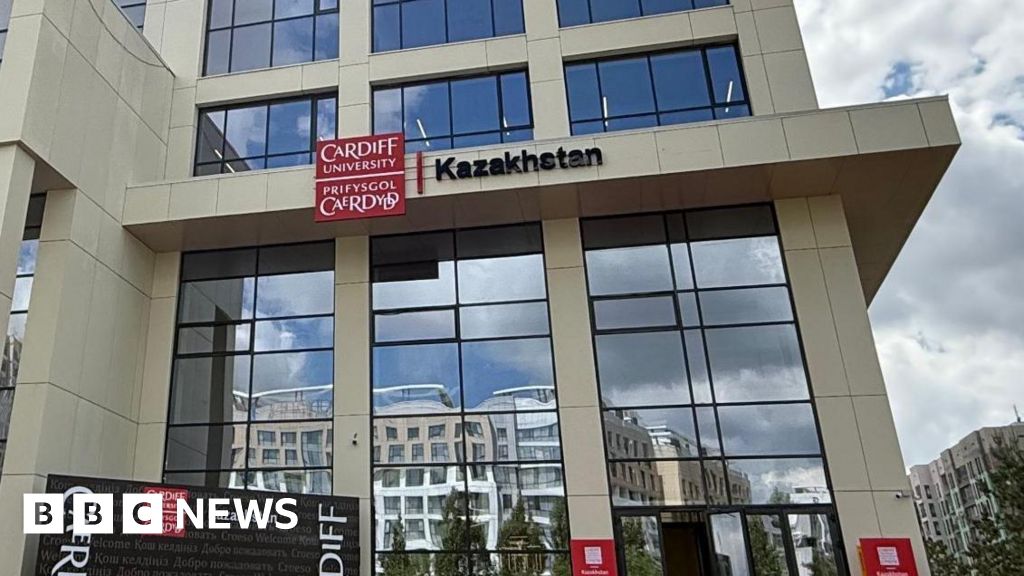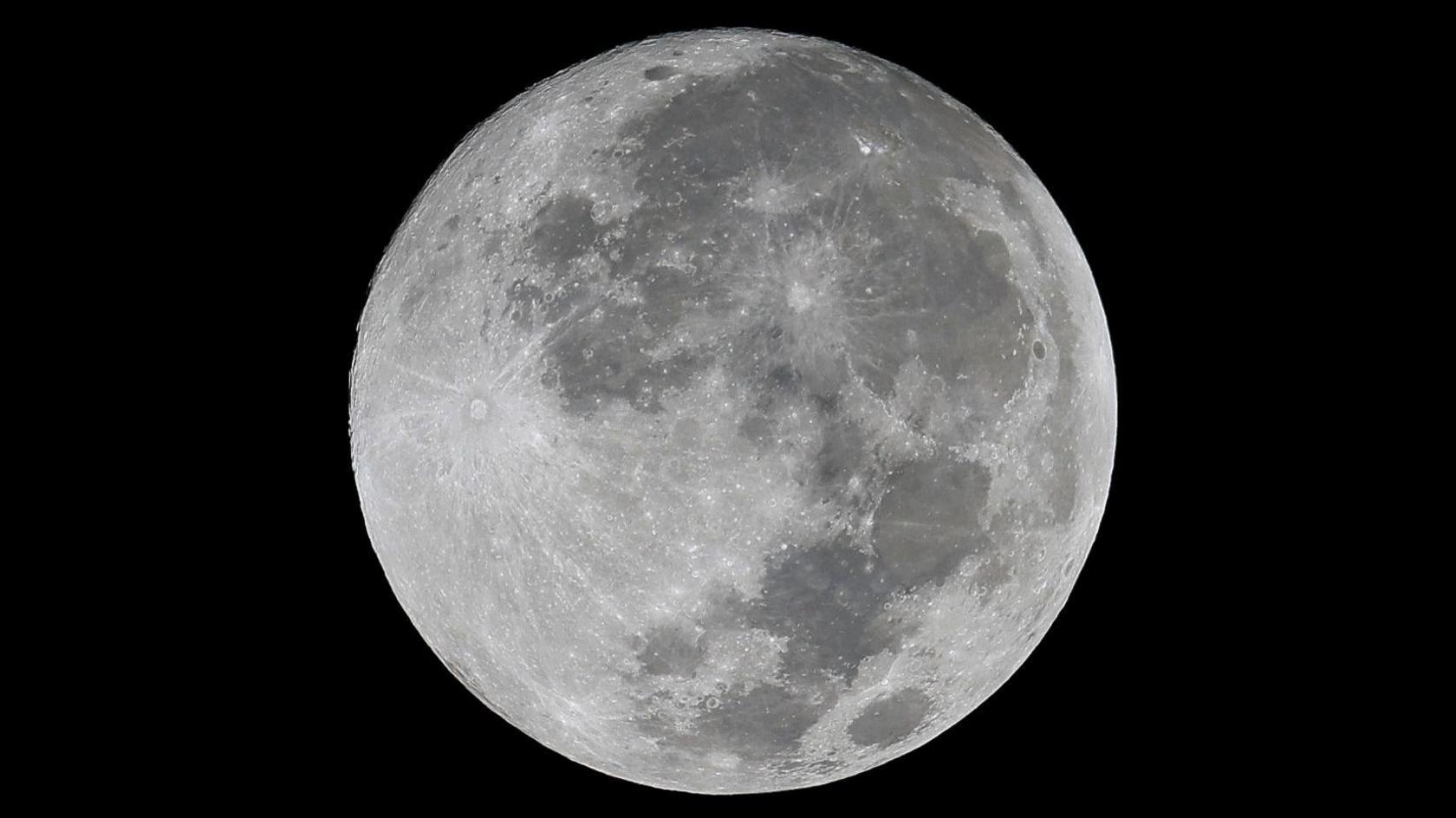 Image source, EPA/Shutterstock
Image source, EPA/Shutterstock
BySarah Keith-Lucas
Lead Weather Presenter
The first of three consecutive supermoons of 2025 will appear in our skies on Tuesday night.
The full Harvest Moon rises in the UK at around 18:20 GMT on 7 October.
It will be the largest and brightest full Moon of the year so far and the first supermoon since November 2024.
If you want to catch a glimpse, keep an eye on the forecast though as cloud may obscure the view in some places.
What makes a full Moon a supermoon?
The Moon's orbit around the Earth is not circular but elliptical, meaning that the distance between the two varies throughout the year.
If the Moon is full at its closest point to Earth - called the perigee - or within 90% of its closest point, it can be referred to as a 'supermoon'.
The term was first coined in 1979 by astrologer Richard Nolle to describe full Moons that appear noticeably larger and brighter as they coincide with the perigee.
They can seem to be up to 14% bigger and 30% brighter than other full moons, external.
Different parts of the astronomical community chose to define supermoons in slightly varying ways. An alternative definition is any full Moon within 360,000km of the centre of the Earth - and under this interpretation October's Harvest Moon would not qualify.
What is a Harvest Moon?
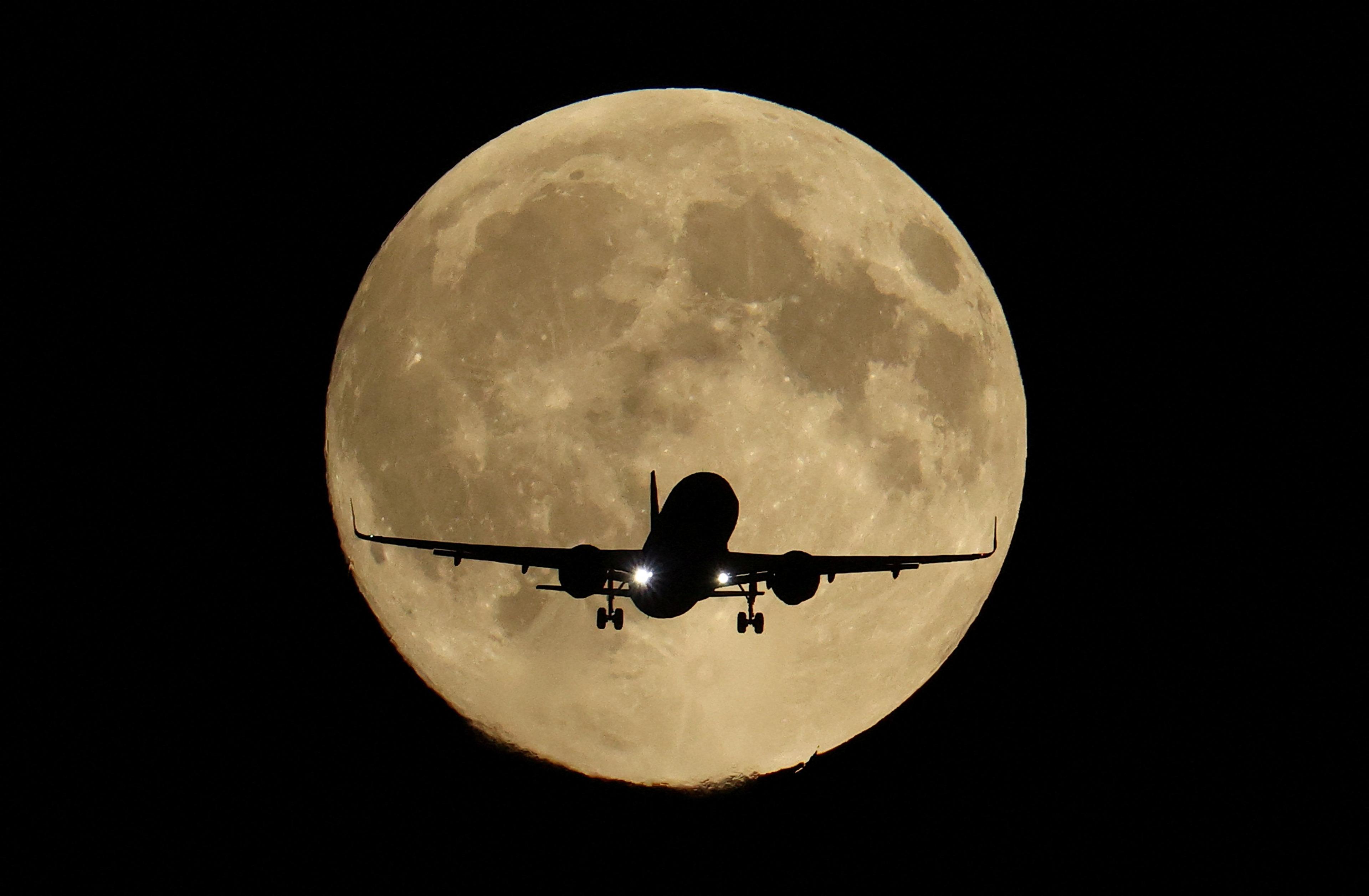 Image source, Reuters
Image source, Reuters
October 2025's full Moon is also the Harvest Moon and the Hunter's Moon.
Full Moons throughout the year are given names, often dating back centuries, that reflect what is happening in nature.
October's full Moon is known as the Hunter's Moon but it is also this year's Harvest Moon. The Harvest Moon is the name given to the full Moon that rises closest to the autumn equinox, traditionally a time for gathering crops. It also rises around sunset for several evenings in succession creating extra light for farmers working outside.
The equinox this year was on 22 September, and often the Harvest Moon occurs in the same month. In fact it's on 7 October and is the latest since 1987.
The Harvest Moon is perhaps the most well-known one of the year, thanks in part to the 1992 hit song 'Harvest Moon' by Neil Young.
Whilst this will be the brightest and largest full Moon of 2025 so far, you won't have to wait long until the next one, as we will see two more supermoons this year, on 5 November and 4 December.
Moon horizon illusion
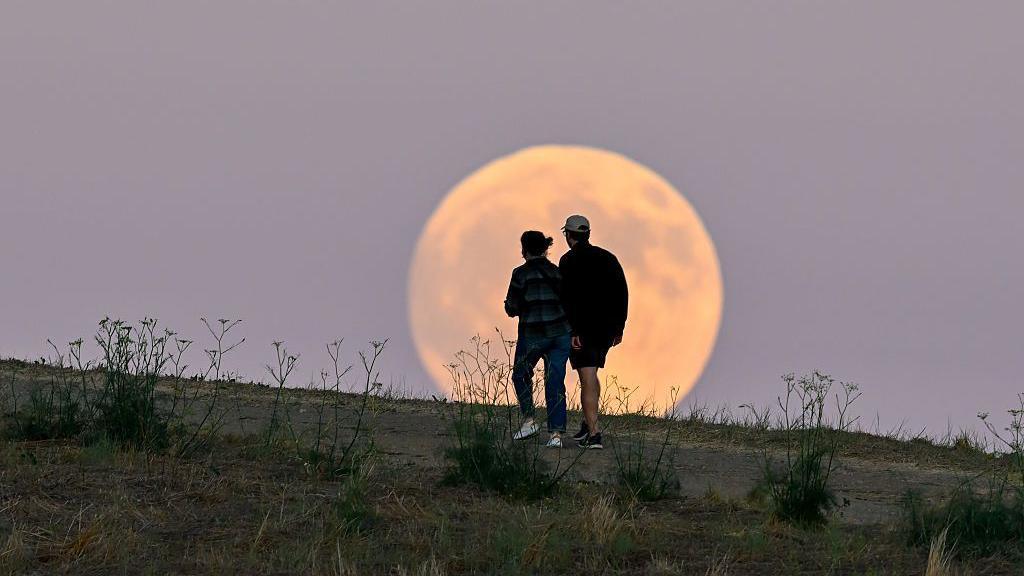 Image source, Anadolu via Getty Images
Image source, Anadolu via Getty Images
An optical illusion that makes the Moon look enormous can be seen when any full Moon is close to the horizon
Have you ever noticed that the Moon appears to be bigger when it is close to the horizon than when it is high in the sky? It does not actually change size as it rises higher, but our eyes perceive this differently.
Scientists do not fully understand why we interpret it this way, but one theory is that when we see the it in relation to other object such as trees, buildings or hills, it tricks our brains into thinking it is bigger than it really is.
The Moon does often look more reddish-orange nearer the horizon and this isn't a illusion. It's because the Sun's light travels through a longer portion of the Earth's atmosphere when the Moon is low in the sky.
The atmosphere scatters away more short-wave blue light, leaving the longer-wave reddish hues to project upon the Moon.
What is the forecast?
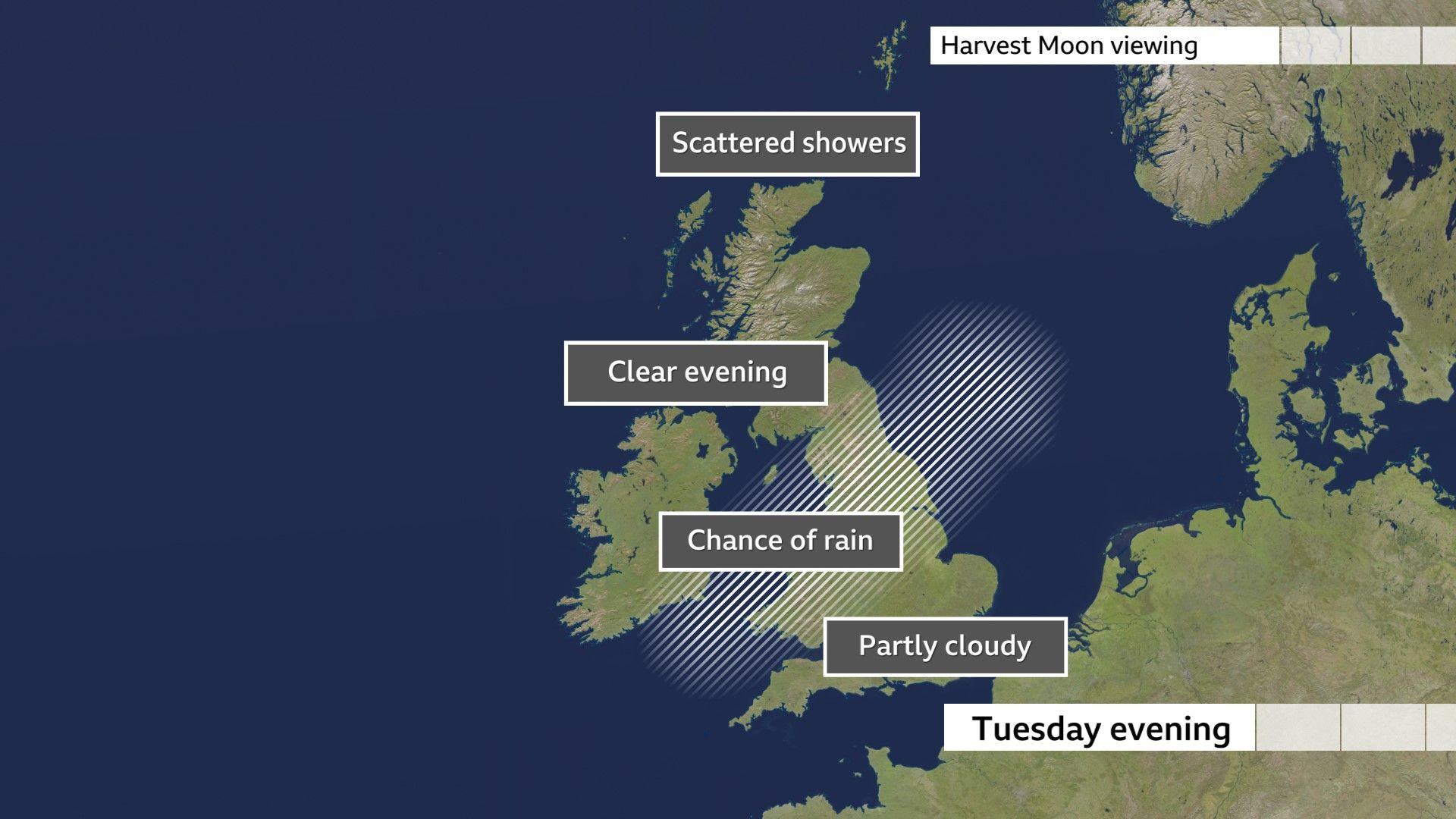
Skygazers in northern and southern England will have the best chance of catching a glimpse of the Harvest Moon
After Storm Amy, the weather this week looks much calmer.
On Tuesday, a cold front will bring damp weather to Northern Ireland and Scotland, but skies should clear just in time for the Harvest Moon. However, as the front travels south, it will spoil the view in northern England, the Midlands and Wales.
Further south, cloud cover will be variable, with occasional clear spells allowing for glimpses of the Moon.

Click here to play 'Cooler than me?'
.png)
 4 hours ago
1
4 hours ago
1





